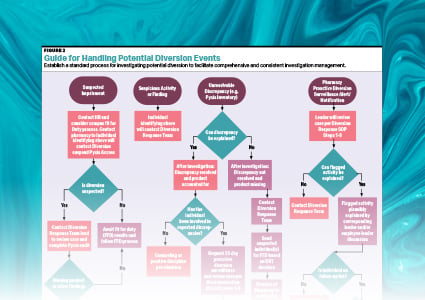- Show Menu
- Contact Us
- FAQs
- Reader Service
- Survey Data
- Survey Winners
- Testimonials
- Upcoming Events
- Webinars
- White Papers
Ensuring Pediatric Medication Safety In a BCMA Environment
Feverishly, we work on solutions to prevent the same errors from occurring at our institutions. Double and triple checks are added, standardized doses and concentrations are required, and specialized tools, such as calculators and smart pumps, are purchased. Yet errors still creep through. Studies have shown 34% of medication errors occur during medication administration, and only 50% of these are caught1. Recognizing these risks, more and more hospitals have implemented bar code technology as one of their safety nets.
Bar Coding and Storing Pediatric Doses in the Pharmacy
Bar code medication administration (BCMA) is not as straightforward as scanning products at the grocery store, and the leap into the pediatric population can be even more challenging. For the Lehigh Valley Health Network (LVHN), the BCMA journey began in 2002, with the development of a multidisciplinary team including nursing, pharmacy, materials management, information services, care management, and the legal department.
LVHN is a not-for-profit, community teaching hospital, located in Allentown and Bethlehem, Pennsylvania. With nearly 1,000 beds, the three-hospital system has more than 1,100 physicians on staff, representing over 50 specialties. It is also a level I trauma center with additional qualifications in pediatric trauma. Our BCMA pilot began on a single medical-surgical unit and lasted for approximately 18 months, after which, we began a gradual rollout across the rest of the hospital system, with the pediatric units going live in 2006. Why the delay in implementing this technology for our tiniest and most critical patients? One of the challenges in implementing BCMA on pediatric units is that, unlike the tablets and capsules used for adult patients – many of which arrive from the manufacturer with pre-printed bar codes – a lot of pediatric medications are either purchased as bulk liquids or compounded in the pharmacy, and then dispensed into unit dose oral syringes. Further complicating the problem, all doses for this patient population are weight-based. This makes the spectrum of dosing possibilities endless and renders it nearly impossible to create a dose-specific bar code for every possible medication. As a solution to this issue, LVHN developed a new labeling system for our oral pediatric medications.
We started by creating separate dictionaries for our pediatric and neonatal oral medication orders. Information services (IS) personnel and pharmacy systems specialists worked to code the new labels and medications. Using our existing GE LastWord pharmacy information system, medications in these two dictionaries were coded with a new “oral” subclass. This adjustment allowed the system to screen for this subclass along with the bed location of the patient. If the patient is located in one of our pediatric units and a medication is ordered containing the oral subclass, the new form of the label will print.
Practitioners are directed to order from one of the two dictionaries, which, upon verification, will cause oral pediatric and neonatal medication labels to print with both a bar code and an auto-calculated dose volume. Similar to our labels for IV medications, the bar code contains the patient’s account number and the order number for the medication. The auto-calculated volume decreases the risk for error by eliminating the need for human calculation, and the bar code helps us to ensure patient safety at the bedside. A label prints for each oral pediatric dose to be prepared, along with an extra label to be placed on the final preparation’s outer bag.
LVHN’s pediatric labels also feature a tear-away tab that we place on log sheets stored in the pharmacy. The log sheets record pertinent preparation information and document who prepared the dose and who verified it.
To distinguish them from adult doses, we use pink labels for our pediatric doses and print them from a separate printer in the pharmacy. Both the label color and specific printer guide the technician to take the label to a section in the pharmacy where all of the standardized concentrations for pediatric medications are stored. By storing adult and pediatric concentrations separately, the risk of an accidental interchange is decreased. This area of the pharmacy is segregated from other areas, making it quieter and providing both pharmacists and technicians an increased ability to focus. Items needed for preparing and verifying medications, such as empty syringes and compounding references, are within easy reach, allowing for efficient workflow. LVHN’s IS department was able to design a Web-based bar code verification system with which we can verify the accuracy of any dose’s bar code against a test system. The program indicates the name and strength of the medication of the bar code that was scanned.
Hospitals interested in implementing BCMA must keep in mind that several different methods for bar coding medications will likely be needed. No one system works for all medications, and no two systems are alike. Pharmacy should discuss system requirements and capabilities with the IS department.
Automated Dispensing Cabinets
Bar code technology can also ensure the accuracy of automated dispensing cabinet (ADC) stocking activities. When refilling an ADC, a bar code can be scanned to guide the user in placing the drug in the correct location. To further improve patient safety upon dispensing, secured pockets should be used, particularly in areas like the ED, where ADCs contain medication concentrations for the treatment of both pediatric and adult patients, and in areas from which high-risk medications are dispensed. When the caregiver attempts to dispense a medication from an ADC utilizing secure pockets, only one pocket will open, thereby decreasing the chance an error.
At the Bedside
Although system functions and enhancements vary from vendor to vendor, BCMA, when combined with an electronic medication administration record (EMAR), can be a valuable tool in our pediatric medication safety arsenal. These systems are capable of sending a variety of messages to the caregiver upon medication administration to promote medication safety. Among the most helpful warnings available are wrong patient; wrong medication; wrong time, i.e. a dose is being given too soon; medication expired; and dose already charted. In some systems, maximum doses based on patient weight can be incorporated into the drug profile, initiating alerts when a dose that is too high for the child is prescribed and/or scanned against the patient wristband. Systems can also notify users when there is an attempt to administer more than the permitted number of doses in a given day, or if the maximum dose for a 24-hour period has been exceeded. In order to avoid “alert fatigue” for the nursing staff, try to limit the alerts in each system. Allow certain alerts to be triggered upon order entry, notifying the practitioner of a potential conflict. Other warnings can be generated upon the bar code scan. In either case, make the alerts obvious. Systems that produce a noise, pop-up boxes, and colorful warnings are usually well received and encourage the user to stop, read the alert, and re-think the current action.
Beyond Medications
In addition to medication administration, bar code verification can be useful during blood transfusions and in ensuring babies receive the correct breast milk. At LVHN, nursing mothers are given 10 bar coded labels at a time to place on the bottles of breast milk they pump. The bar code on each label contains the mother’s account number, and the mother writes in the baby’s name, along with the date and time of milk collection. Filled bottles are then stored in the freezer until they are given to the baby. The nurse thaws the milk, writing on the label the date and time of the thaw. When the bottle is brought to the baby’s bedside, the nurse will type the command “match” into the computer and scan the bar code on both the bottle and the baby’s wristband. At the time of birth, both the mother’s and the baby’s account numbers are linked in the computer system. Scanning the bottle’s bar code against the baby’s wristband ensures the right baby receives the right milk.
Monitoring System Utilization
BCMA is not a technology you can implement and hope it catches on. It requires continuous monitoring, education, improvements, and, most of all, encouragement. No BCMA implementation is complete without a monitoring system in place to complement it. At LVHN, we utilize an enterprise data repository system to generate a scorecard for each nursing unit. Data can be sorted by caregiver, drug, unit, and time of day. The scorecards allow members of the management team to view utilization in real time, on a daily basis, and report any issues that might interfere with utilization.
In addition, the pharmacy management team should review the BCMA system data to determine if there are any particular medication issues affecting the system. At LVHN, the pharmacy directors and associate directors review this data on a monthly basis, looking for medications with a 0% scanning rate. In these cases, a medication may have arrived without a bar code or the preprinted bar code may not have been entered into the system. If a manufacturer changes a product’s bar code or a new brand of a product is purchased and not activated in the system, the nurse will be unable to scan the product and find a match. Continuous monitoring of such situations has made BCMA a success at LVHN. The hospital’s overall bar code usage is nearly 97%, with pediatrics at 94%, the NICU at 95%, and the pediatric intensive care unit at 97%.
Conclusion
Bar code technology presents today’s hospitals with a variety of methods for improving pediatric medication safety. That said, BCMA does not take the place of a health care professional’s critical-thinking skills; it merely adds to the technological safety net we hope to surround ourselves in. We must remain vigilant and carefully monitor practices at our facilities, in order to safely administer care to our pediatric patients.
References:
1. Leape LL, Bates DW, Cullen DJ, et al. Systems analysis of adverse drug events. JAMA. 1995;274:35-43.
Lisa T. Durkin, PharmD, has served as the associate director of pharmacy for the Lehigh Valley Hospital and Health Network since March 2006. She received a doctorate in pharmacy from Wilkes University. The author can be reached at lisa_t.durkin@lvh.com
Login
Like what you've read? Please log in or create a free account to enjoy more of what www.pppmag.com has to offer.
Recent Popular Articles
About Us
Pharmacy Purchasing & Products Ridgewood Medical Media, LLC
Quick Links
Subscribe to Our Email Newsletter!
© 2005 - 2025 PP&P Magazine - Pharmacy Purchasing & Products.
All rights reserved.








